30+ Japanese Home Decor Ideas And Designs
Japanese home décor has a unique charm that can transform any space into a serene oasis. The country’s rich culture and tradition are deeply ingrained in its interior design, which is often characterized by simplicity, elegance, and harmony with nature. If you’re looking to bring some of these elements into your own home, we’ve got you covered. In this article, we’ll explore 30 Japanese home décor ideas that will add beauty, warmth, and a touch of Zen to your space.
30 Best Japanese home decor ideas and designs
Incorporate Elements of Nature
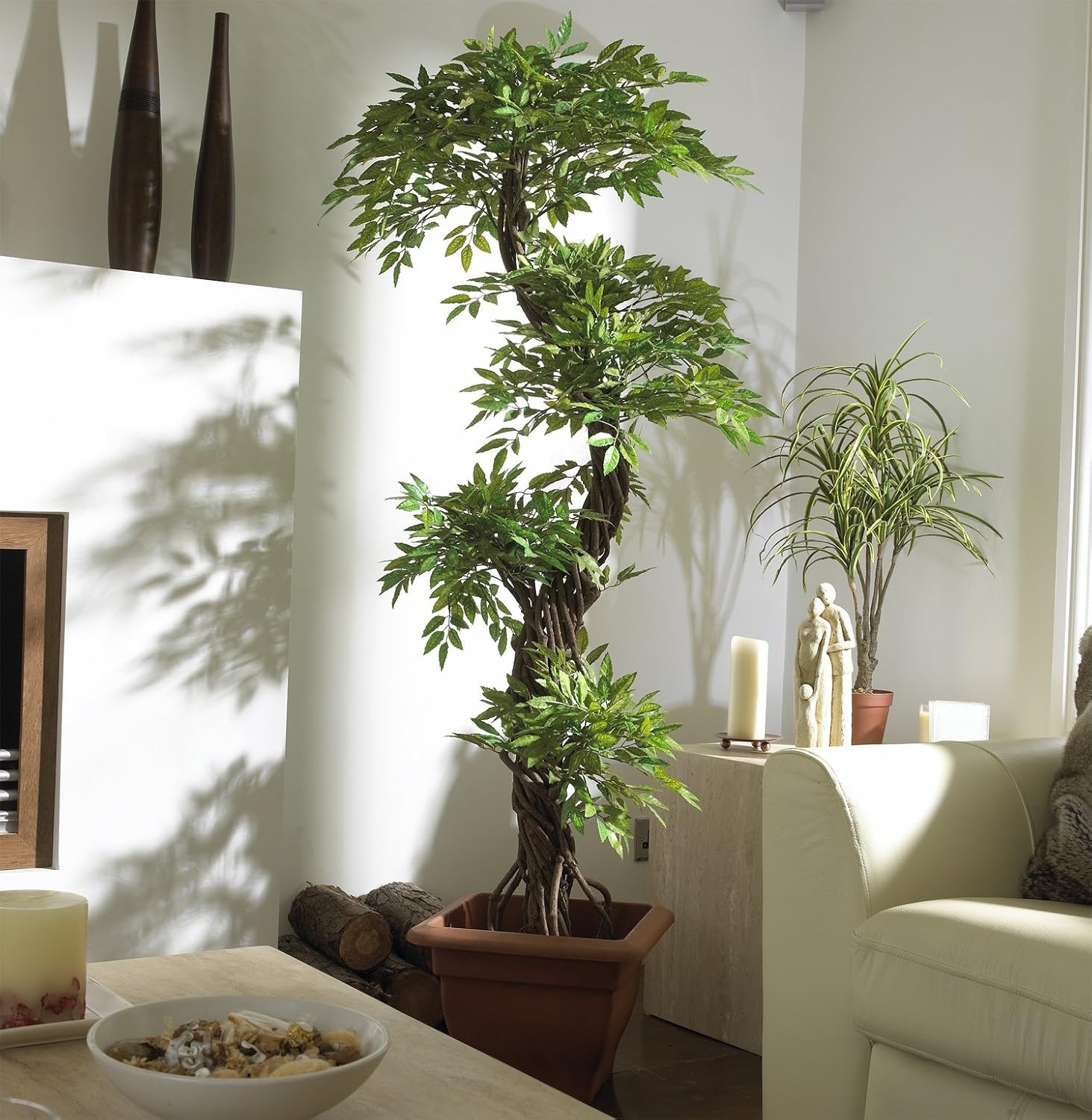
When incorporating Japanese home décor ideas into your space, remember that nature plays a vital role. Bring the outdoors in by introducing traditional Japanese plants like bamboo, cherry, and bonsai trees. If these aren’t feasible, greenery such as palm or orchid can be effective substitutes. The emphasis on simplicity and minimalism is also crucial in Japanese home décor, so aim for a clean and natural aesthetic.
To achieve this, consider using large windows that provide an expansive view of the outdoors. A wide-open perspective is essential in capturing the essence of Japanese home décor.
Fix A Soaking Tub
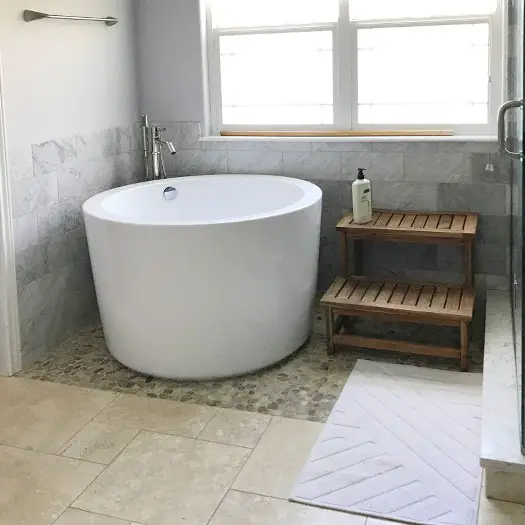
Incorporating an authentic Japanese interior design element, such as a soaking tub, is crucial when it comes to creating a serene and spa-like atmosphere in your home. The concept of ‘ofuro’ or bath is deeply rooted in Japanese culture, making it an essential part of any traditional Japanese home. By installing a soaking tub, you can effortlessly transform your bathroom into a peaceful retreat where you can unwind and rejuvenate.
To further enhance the ambiance, consider adding some lush greenery around the tub to create a sense of harmony with nature. For inspiration, visit https://www. signaturehardware. com/lc_ideas-japanese-tubs, which features a stunning soaking tub design that’s easy to replicate in your own home. Simple yet effective, this design will undoubtedly elevate your relaxation moments and make your bathroom an oasis of tranquility.
Include Sliding Doors or Screens
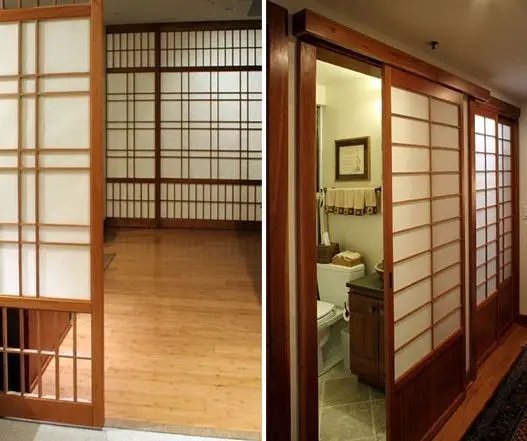
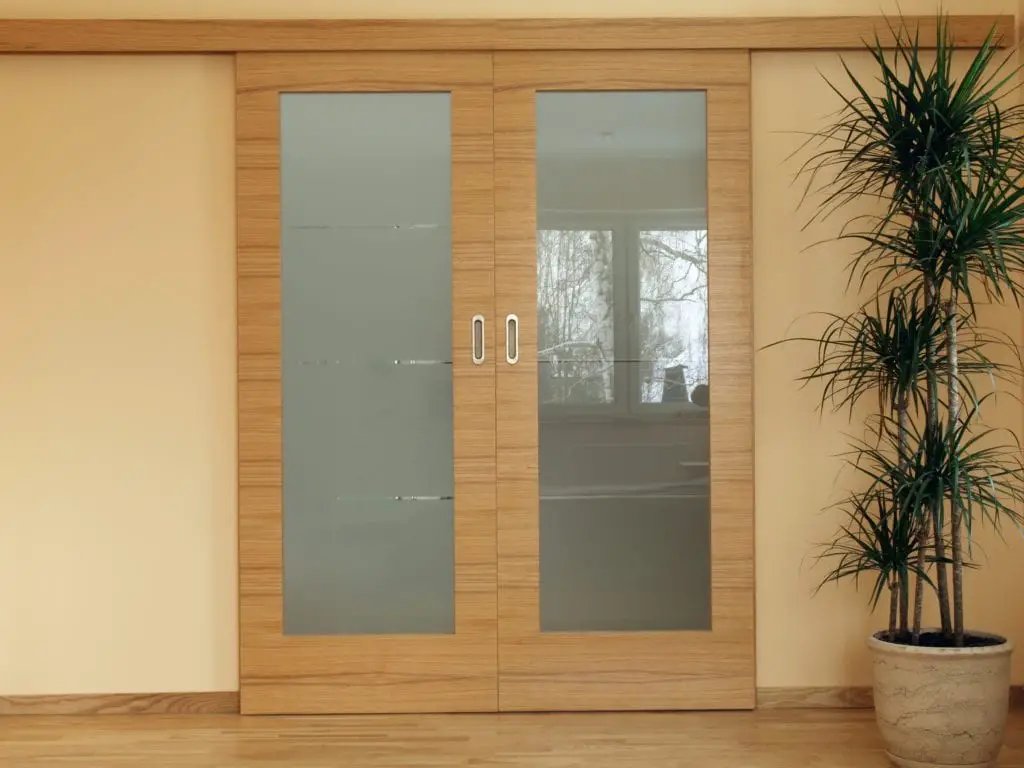
In Japanese culture, Shoji – a traditional sliding door or screen – plays a vital role in home design. With high house rates driving many to live in small apartments, conserving space is crucial. Sliding doors are an innovative solution that saves room and eliminates the need for swinging doors. The original Shoji features transparent paper within a wooden frame, but modern versions now come with glass panels available online.
What sets these screens apart is their ability to seamlessly integrate with natural light and views, unlike traditional doors. By incorporating sliding doors or screens in place of walls, homeowners can easily create a Japanese-inspired interior. For inspiration on decorating with Shojis, visit arpel. eu. If you’re planning to install one by yourself, start by watching this beginner-friendly video https://www. youtube. com/watch? v=FE_uAvVsOQc.
Add Wood and Bamboo to The Decoration
To infuse your Japanese-inspired home décor with an authentic touch, consider incorporating wooden and bamboo elements. These natural materials are deeply rooted in Asian cultures, allowing you to effortlessly bring a serene ambiance into various areas of your home. Wooden accents can be used for window or door frames, while walls and floors can also be adorned with wood panels from species like cypress or red pine.
Don’t overlook the calming effect that bamboo can bring; use it as decorative elements on walls or floors to create a peaceful environment reminiscent of traditional Japanese homes. Some innovative wooden and bamboo decoration ideas worth exploring include…
Use the Japanese Style Foyer
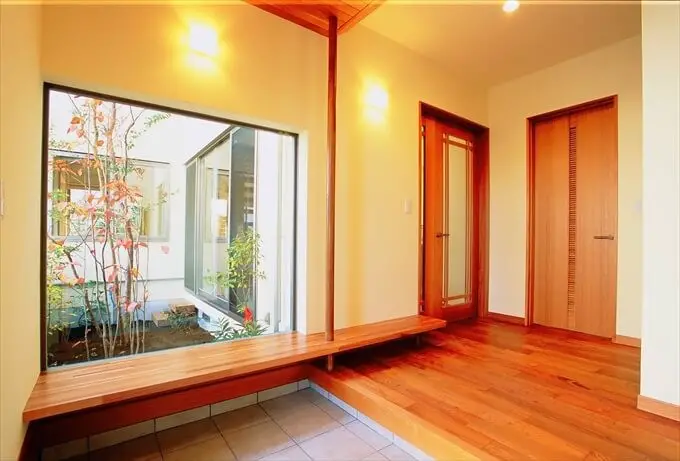
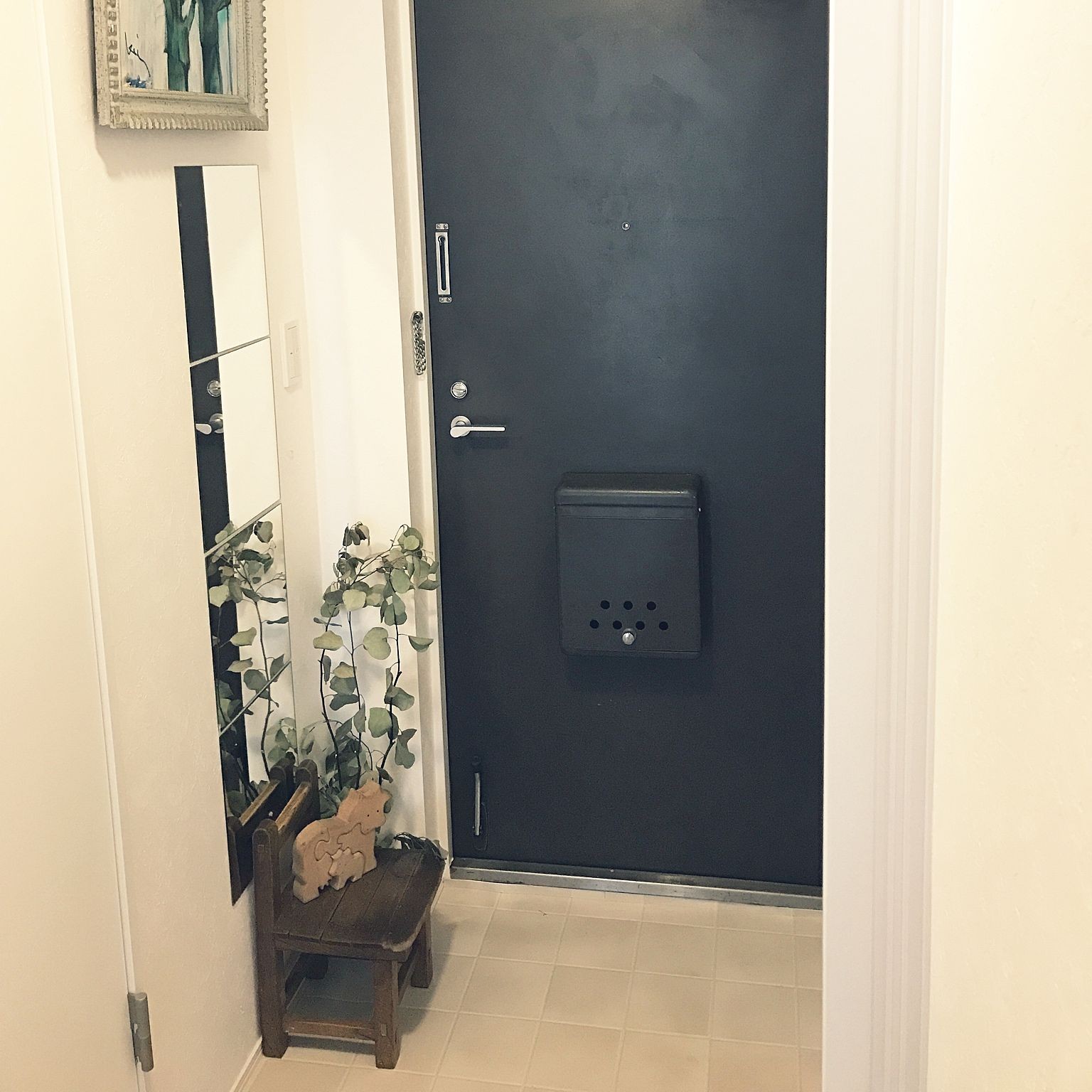
In traditional Japanese homes, the foyer is known as genkan, playing a significant role in their interior design. This space serves as a vital area where visitors are received and shoes are removed upon entering the house. A characteristic feature of any genkan is the Getabako, a shelf designed specifically for storing shoes to maintain cleanliness and order. To create a unique and inviting entryway, consider incorporating elements of Japanese home décor into your design.
A combination of natural light, wood accents, and stone tiles can help achieve this aesthetic. If you’re looking to recreate a genkan that’s both neat and clean, follow the steps outlined below or reference the example provided at https://www. pinterest. ca/rdtessier/entrywaygenkan/. By doing so, you’ll be able to visualize and replicate a traditional Japanese entryway in your own home.
Let White Color Dominant

To incorporate traditional Japanese aesthetics into your home design, consider incorporating a predominantly white color scheme. This can be achieved by painting walls, using white furniture or even installing white flooring. Japanese culture values minimalism and the concept of empty space, known as ‘ma,’ which is beautifully complemented by the simplicity and cleanliness conveyed by an all-white interior.
If you’re not a fan of stark white, you can opt for other neutral colors that will still create the illusion of a larger space. These colors will also harmonize with natural light, another key element in Japanese design principles.
Try Using Tatami Mats
The Japanese culture has a distinct approach to seating and sleeping arrangements, where high chairs or beds are rarely used. Instead, they opt for tatami mats, which serve as both sitting and sleeping areas. This unique aspect of their lifestyle is deeply rooted in tradition.
If you’re keen on incorporating elements of Japanese design into your home but find it challenging to accommodate traditional tatami mats, consider opting for low-lying furniture that still captures the essence of this style. To make an informed decision, take some time to research and learn more about tatami mats, including their various sizes and designs. You can also explore further by clicking on the link provided.
Make A Sand Zen Garden

For nature enthusiasts seeking serenity, a Zen-inspired outdoor space can be a perfect haven. The harmonious blend of natural elements and Japanese aesthetics will not only add a touch of cultural flair to your home but also evoke a sense of calmness. You don’t need to create an expansive Zen garden to reap its benefits; even a compact design can have a profound impact on one’s mental well-being. With these ideas, you’ll be inspired to craft your own tranquil oasis.
Why Not Design an Inviting Tea Room?
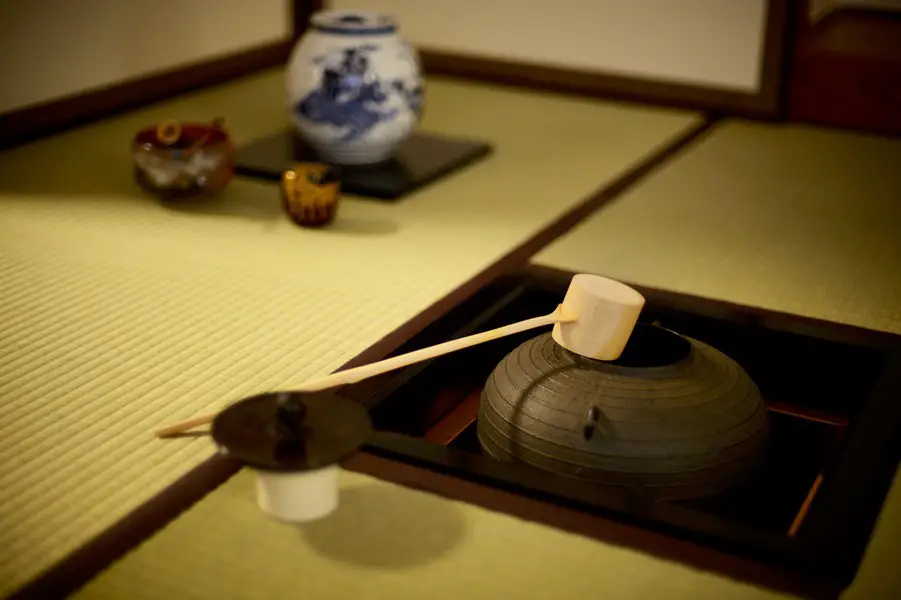
The notion of Japanese culture and design is often deeply intertwined with the concept of green tea. In fact, this very connection gave rise to the revered tradition of the tea ceremony. While incorporating tatami mats may be a crucial element in some cases, designing a unique space for social gatherings remains essential. For inspiration, delve into the world of Japanese tea houses and their distinctive architectural features, as explored on https://www. patternz.
jp/japanese-tea-house-architecture/. By drawing from these designs, you can create a truly remarkable setting that honors the spirit of the traditional tea ceremony.
Why Not Bring in An Aquarium


Japan’s island nation heritage is deeply rooted in its art and mythology, where water plays a profound role. By incorporating this element, you’ll not only be doing justice to their culture but also paying homage to their reverence for nature and the element that sustains it. Consider introducing Koi-inspired pond designs into your garden compound or opt for a majestic reproduction of Hokusai’s ‘The Great Wave’.
For more information on creating a serene Koi pond atmosphere in your outdoor space, explore the topic further.
Hang Your Favorite Woodblock Prints
Woodblock prints offer a unique way to decorate your home’s walls, infusing them with vibrant colors and historical significance. You can even create your own art piece by drawing inspiration from nature – perhaps a beautiful flower or a tranquil bonsai tree. For instance, Hokusai’s works are renowned for their harmonious blend of natural elements and simplicity, reflecting the understated elegance often associated with Japanese culture.
Create A Meditation Space in Your House

Research has shown that Zen monks possess a deep understanding of the concepts they discuss, and this phenomenon is not limited to spiritual practitioners alone. The scientific community has consistently demonstrated that regular meditation practice yields tangible benefits for both physical and mental health.
Moreover, one of the most compelling aspects of meditation is its accessibility – it’s entirely free, requiring only a dedicated space in your home where family members can comfortably gather. A designated meditation area can be a powerful sanctuary during times of stress and chaos.
Light Up the Rooms Using Paper Lanterns
In Japanese culture, paper lanterns hold a rich history. Traditionally, they were illuminated using candles, but modern versions have evolved to prioritize safety. Today, beautiful electric bulbs are used, blending seamlessly with other design elements.
Include More Open Spaces Around the House
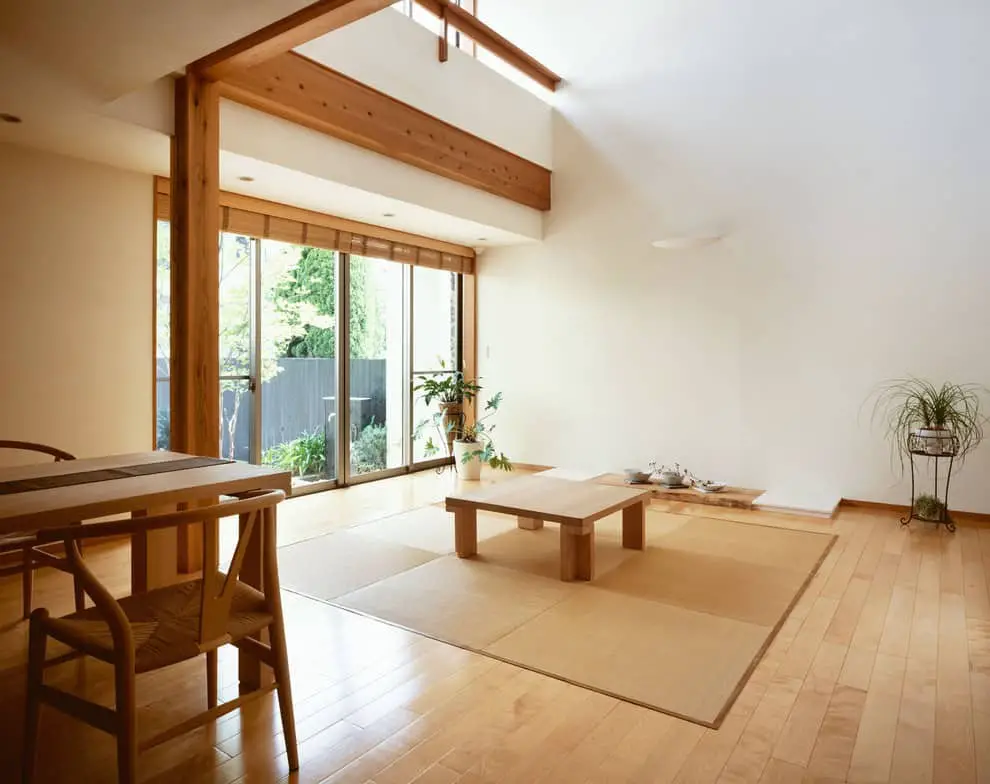
Incorporating the essence of Japanese minimalism into your design requires embracing the concept of open space. By doing so, you’ll create an environment that fosters a sense of calmness and serenity. The absence of clutter allows for a natural flow, which is a hallmark of Japanese aesthetics. This minimalist approach not only provides a visually appealing atmosphere but also promotes a more peaceful ambiance.
Decorate the Walls
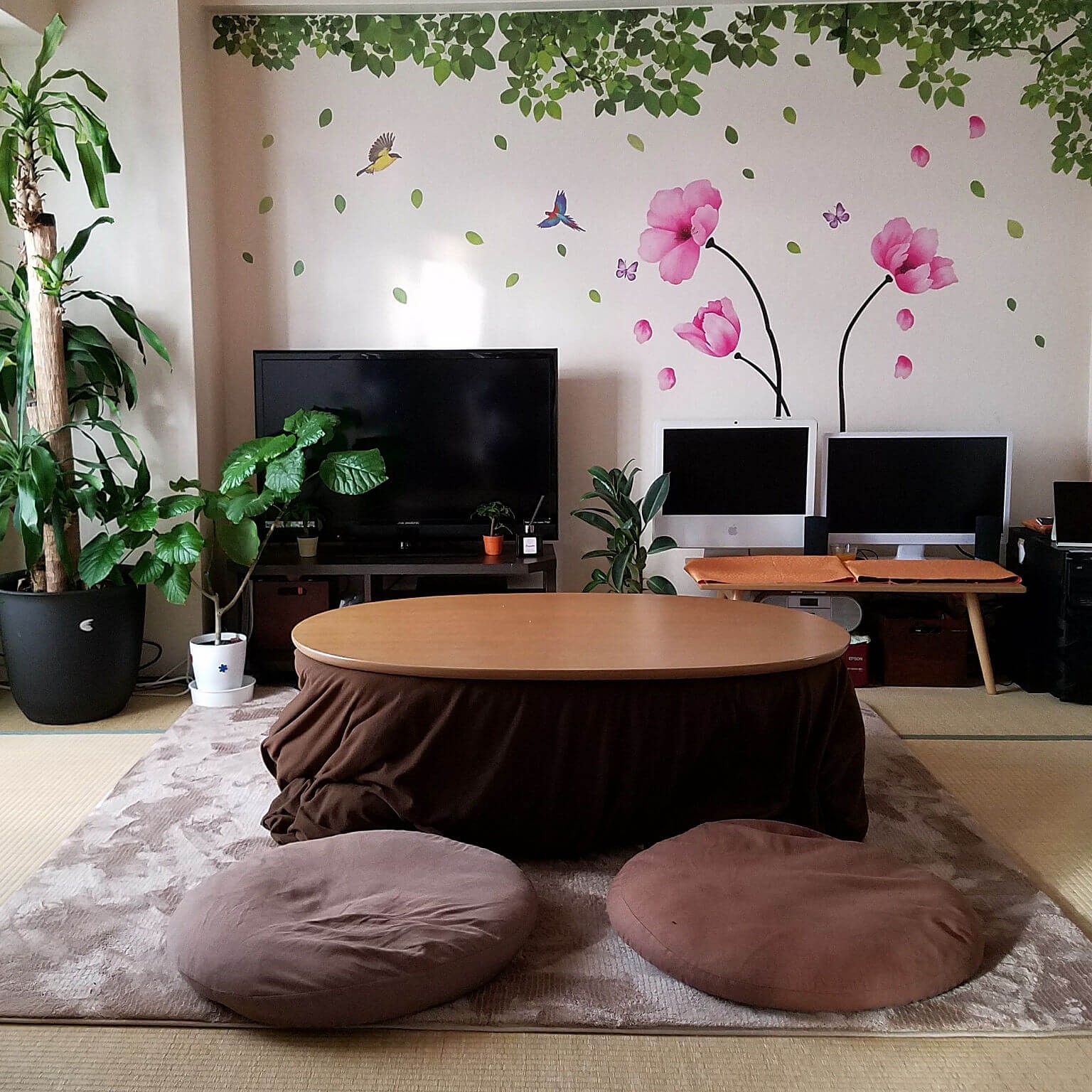
In many Japanese homes, you’ll notice that the walls are painted in simple colors such as brown or white. While this aesthetic is certainly understated, it can also be a blank canvas waiting for personal touches. One way to add some flair without overwhelming the senses is to incorporate wall decals. These adhesive decorations can be easily sourced online or at local craft stores and come in a variety of designs that cater to the principles of Japanese minimalism.
When selecting decals, be mindful of the materials used to ensure they won’t leave any lasting marks on your walls.
Combine Both Japanese And Western Style
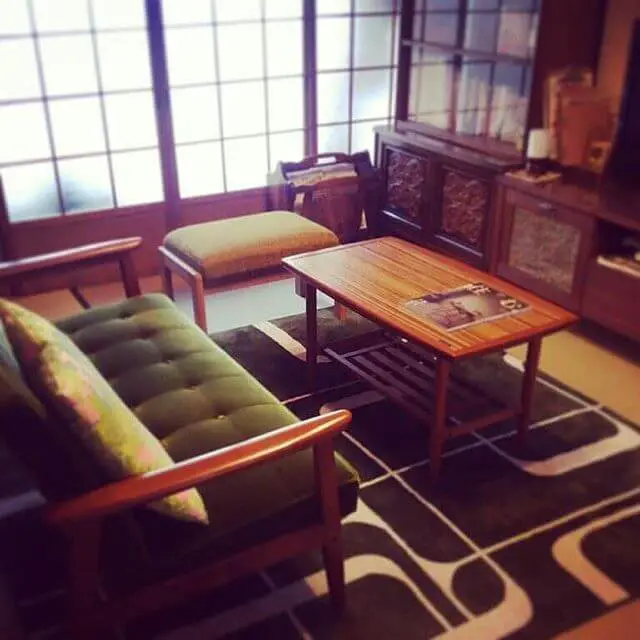
To blend the best of Western and Japanese aesthetics, consider incorporating low tables with tatami mats topped with a carpet. This unique combination seamlessly merges both cultural influences while maintaining a harmonious balance. To prevent overwhelming the senses, opt for neutral color schemes that effortlessly tie together the two styles. For inspiration, explore this concept further.
Use Floor Cushions or Sofas

To create the illusion of a larger living space, consider incorporating floor cushions or sofas into your design. Also known as zabutons, these versatile seating options can be used in conjunction with a low-profile table, such as a chabudai, to create a functional and stylish arrangement for serving meals or casual gatherings. For inspiration, take a look at the zabuton and chabudai combination [insert link here] and visualize how this setup could transform your own living room.
Bonsai Trees
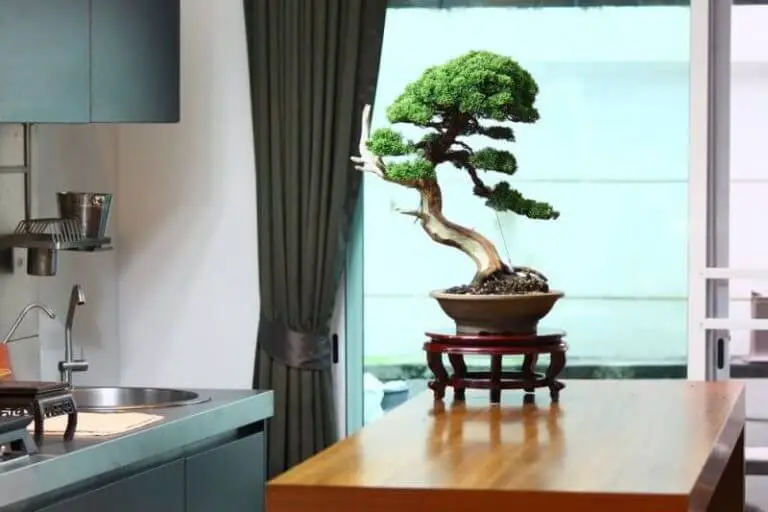
Harmonizing with nature, Japanese design emphasizes bringing the outdoors in – a concept beautifully embodied by using bonsai trees as décor. While these miniature marvels may come at a premium price, particularly for larger specimens that are harder to source, their unique charm is well worth the investment. As you cultivate your own bonsai tree, be prepared to dedicate time and attention to ensure its health and beauty, ultimately transforming your home’s aesthetic.
Indoor Hanging Plant
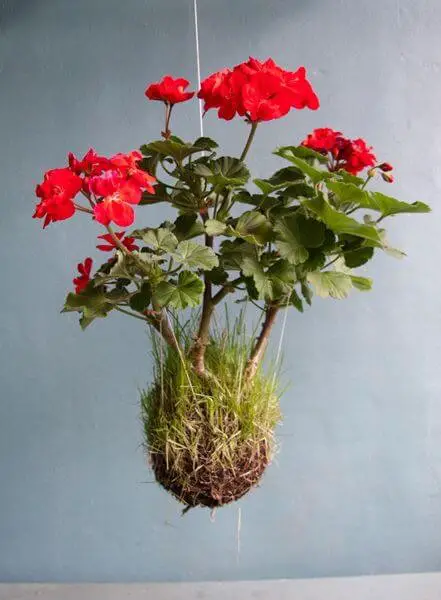
Japanese home décor is renowned for its elegant simplicity and harmonious blend of natural elements. Among the many creative ways to bring the outdoors in, indoor hanging plants are a staple feature in most Japanese settings. Not only do they thrive on balconies and patios, but they can also be effortlessly suspended from ceilings or draped over walls using transparent wrapping and a simple thread.
This versatile design element allows for maximum flexibility, allowing you to create a lush, verdant oasis anywhere within your home.
Laundry Drying Corner
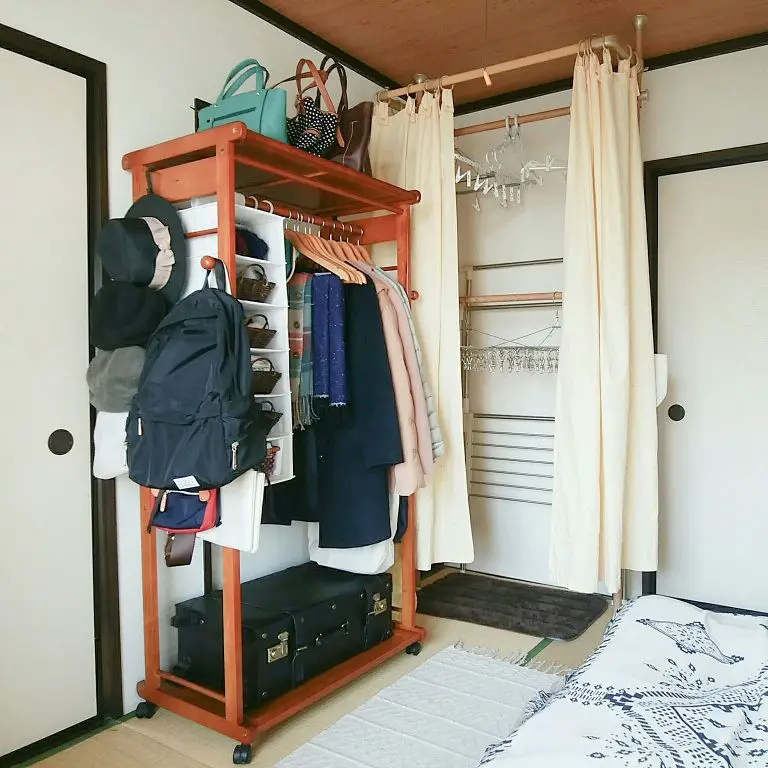
In Japan, the concept of designated laundry areas is relatively uncommon due to the country’s compact building designs. However, this doesn’t mean that functionality and aesthetics must take a backseat. By incorporating a drying corner into your own home, even in a small space, you can strike a balance between practicality and style. While these corners may not be heavily decorated, they can still make a subtle yet thoughtful addition to your living space.
Feel free to draw inspiration from this design or explore more ideas online if you’re looking for alternatives.
A Neat and Organized Closet

Embracing the concept of Japanese minimalism, the idea is not to overwhelm one’s closet with clutter. Instead, it’s essential to create a harmonious space by thoughtfully arranging and curating the contents. Start by separating clothes into three categories: those that are no longer needed, those that are still worn regularly, and those that are treasured for their sentimental value or exceptional quality.
By doing so, you’ll not only free up valuable closet space but also gain a fresh perspective on your personal style. Additionally, consider repurposing empty boxes to add a touch of uniqueness to your closet design.
Have Meaningful Calligraphy on Your Walls
Japanese artistry with calligraphy is deeply rooted, reminiscent of China’s own rich heritage. This refined art form often takes pride of place in a designated area, showcased as a stunning display. For those eager to create their own masterpieces, taking a calligraphy course can be an enlightening experience. Alternatively, you may wish to explore the craft further by following this link for inspiration.
Include Origami in Your Table Arrangement
One way to infuse Japanese culture into your home is through the art of origami. Not only can you display the intricately folded creations on tables or shelves, but you can also use them as a unique conversation starter. To take it to the next level, consider leaving instructions for visitors on how to create their own origami, adding an interactive element that’s sure to keep family members engaged. For inspiration, take a look at this beautiful example of an origami piece.
Create Room for Natural Light

Japanese aesthetics often harmonize open spaces and minimalist designs with a deep appreciation for nature. Allowing natural light to flood your home is a key aspect of this style, as it brings a sense of serenity and makes the space more inviting. To achieve this look, consider incorporating large windows and ceiling openings like skylights to maximize the influx of natural light.
When it comes to managing the amount of natural light entering your home, avoid using heavy curtains that can block out the sun’s rays. Instead, opt for sheer or bamboo shades that will allow the light to filter in while still providing a touch of texture and visual interest.
Try Combining Popular Japanese Colors
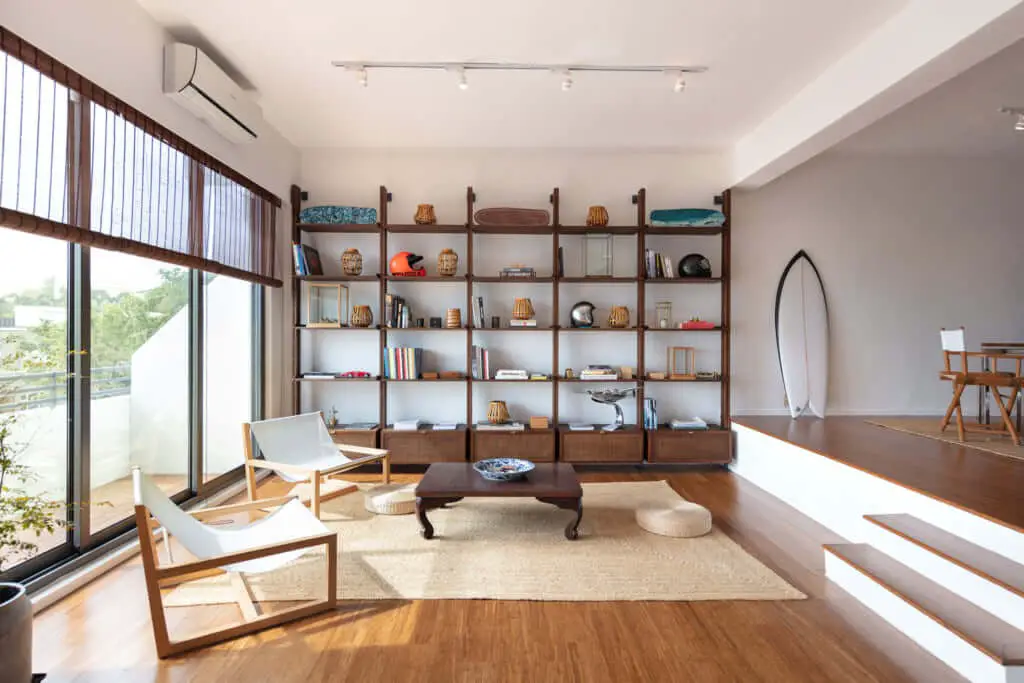
Japanese aesthetics often prioritize simplicity and minimalism, which is reflected in their use of colors. By incorporating natural hues, they create a harmonious atmosphere that brings the outdoors in. The color palette typically features earthy tones such as green for lush foliage, brown for wood accents, and grey for stone textures. This aesthetic can be achieved by using flooring with a natural stone appearance, complemented by furniture with a rich wooden tone.
Additionally, dark-toned paper screens or wallpaper can add depth to the space. When introducing this design into your home, you can incorporate elements like wooden wardrobes or shelving units to create a cohesive look. To add a pop of color, consider incorporating green plants or other natural elements to bring in a touch of vibrancy.
Decorate the House with Buddhist Statuary
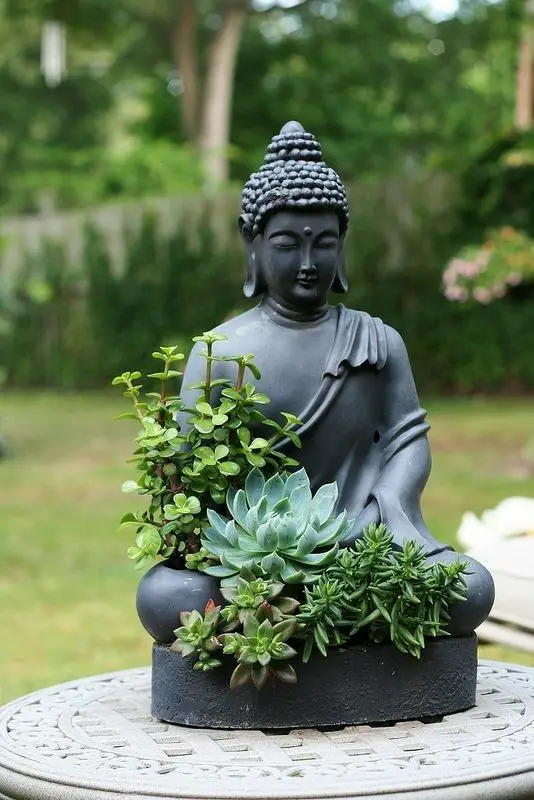
In many Japanese homes, it’s common to find a serene and tranquil space dedicated to Buddhism, known as a Butsudan. This sacred area typically features a collection of statues and other Buddhist-inspired decor that serves as a reminder of the importance of spirituality in daily life. While some homeowners opt for a full-fledged altar setup, others choose to incorporate smaller, more subtle elements to create a sense of calm and contemplation.
One effective approach is to combine the shrine with a meditation room or area, allowing individuals to seamlessly transition from mindfulness practice to everyday activities. For those looking for inspiration, consider consulting online resources like Pinterest, where you can find examples of beautifully curated Buddhist statuary, such as [https://www. pinterest. com/pin/399131585729097685/](https://www. pinterest. com/pin/399131585729097685/)
Why Not Use Stones to Bring A Cooling Effect in Your House?
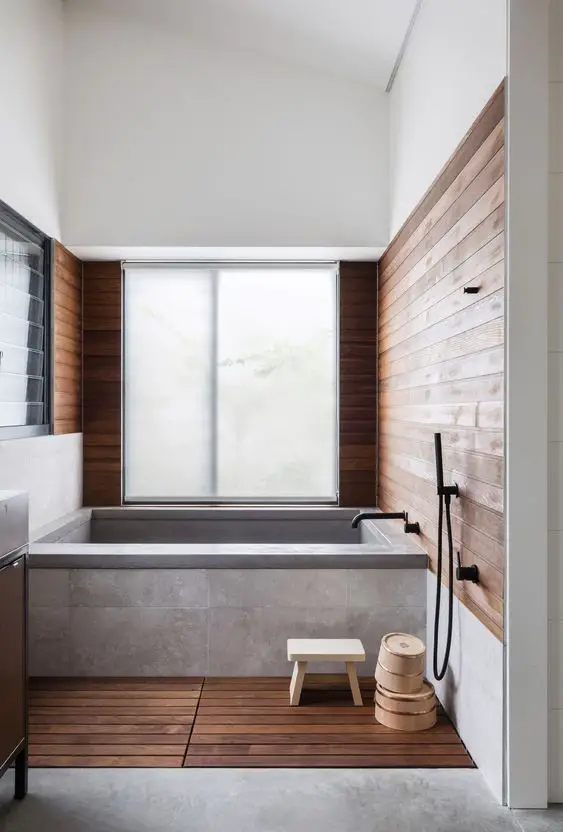
Incorporating stones into your home design is not only functional but also aesthetically pleasing. One effective way to achieve this is by combining stone tiling with wood panels to create a harmonious and calming atmosphere. This unique combination can be particularly striking in specific rooms, such as the bathroom, where the natural textures and colors of the stone and wood can blend seamlessly together, creating a truly inviting space.
Have A Fireplace
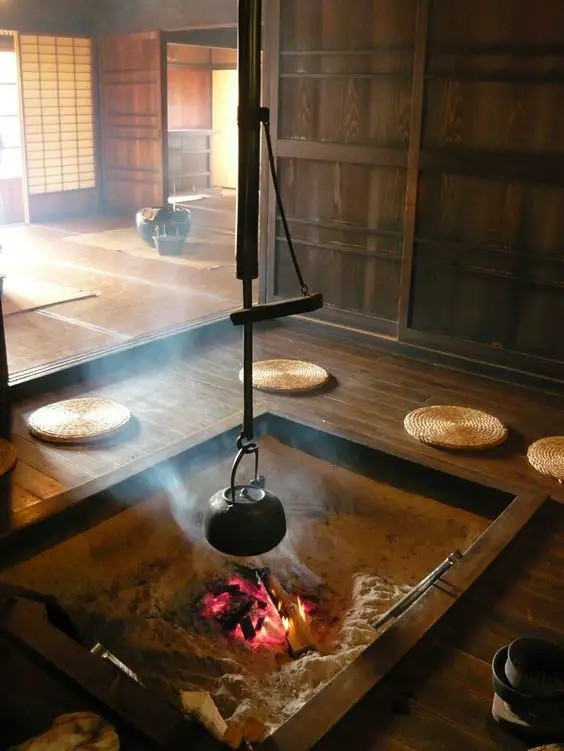
When it comes to staying cozy during the colder months, the Japanese have a clever solution: the irori, a central fireplace that doubles as a space for warming food and water. This unique design is perfect for social gatherings with friends or family, offering a warm and inviting atmosphere. Imagine being surrounded by loved ones, enjoying a cup of hot tea while the warmth from the irori seeps into your bones.
Consider Adding Circular Monograms

In Japanese visual design, circular elements are a common feature. These intricate patterns may not be reducible to simple geometric shapes, yet they hold great significance in the context of Zen Buddhism, where discipline is highly valued. For inspiration on incorporating these circular monograms into your home decor, look no further.
Are you a gamer? Why not infuse the idea in your home
Transform your home into a unique gaming sanctuary by incorporating game-themed décor. Create an immersive experience with a video game-inspired room, perfect for unwinding or keeping teens entertained indoors. Draw inspiration from legendary games and Japanese culture to create a one-of-a-kind space that reflects your passion for gaming. Take a look at this fantastic design example and get ready to level up your home’s style.
Conclusion
While the 30 Japanese home décor ideas presented may initially seem tailored to a specific aesthetic or cultural affinity, their appeal is actually universal for anyone enthralled by interior design. By exploring these concepts – nature, simplicity, and minimalism – you’ve gained a deeper understanding of what makes Japanese décor so captivating. So why not take the plunge and bring some of these designs into your own home?
If you’re already enamored with Japanese home décor ideas, I hope this list has inspired you to incorporate some of these elements into your living space.
Related Posts
When it comes to furnishing our homes, the internet has become an indispensable tool. With just a few clicks, we can access a vast array of bedroom furniture retailers, each offering its unique selection and competitive prices. In this context, it’s essential to know which online stores offer the best deals on high-quality items that meet our specific needs. Similarly, determining whether a coffee table is a must-have for a living room or not requires expert advice.
Moreover, finding the perfect pillows that provide comfort and quality can be a daunting task. To make informed decisions, we’ve compiled reviews of top 45 retailers for buying bedroom furniture online, evaluated the necessity of a coffee table in a living room, and curated lists of top stores for purchasing pillows, glider recliners for nurseries, recliners for seniors, and recliners for back pain sufferers.


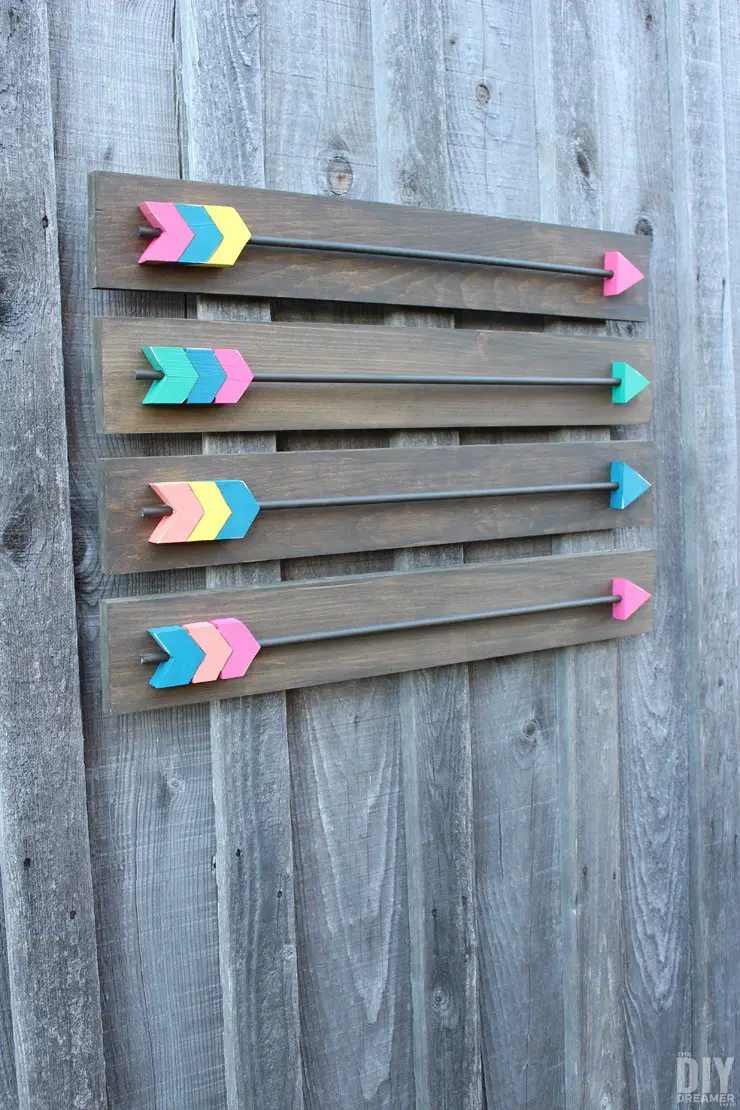


![How To Make A Mold Of Your Hand At Home [Easy Diy Project]](https://potterpalace.com/wp-content/uploads/2024/05/d58045d6c2e5a0d97df0e1199cce0185_compress.jpg)
